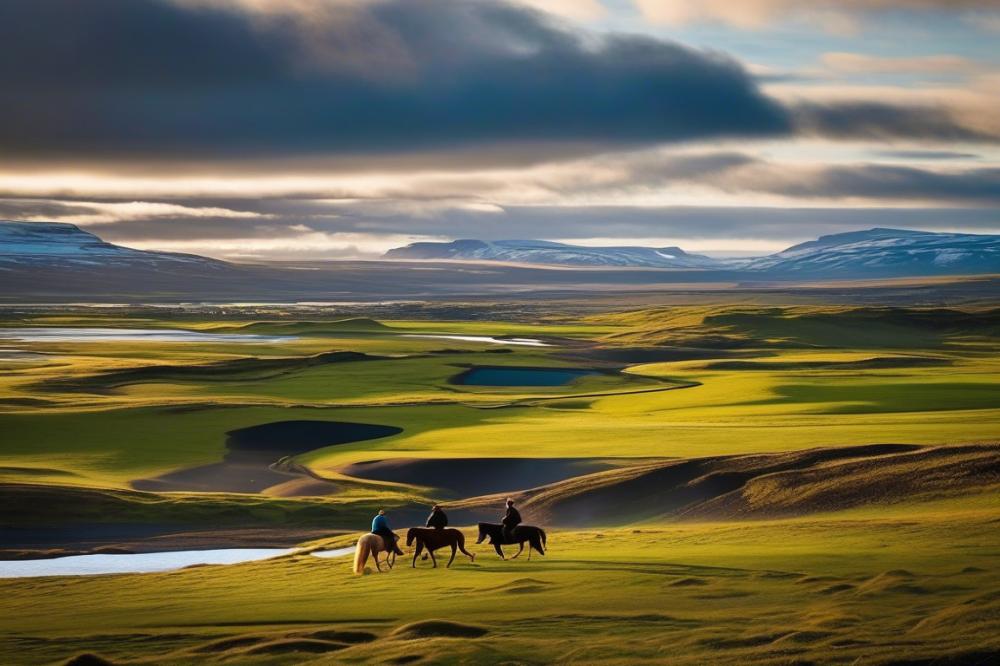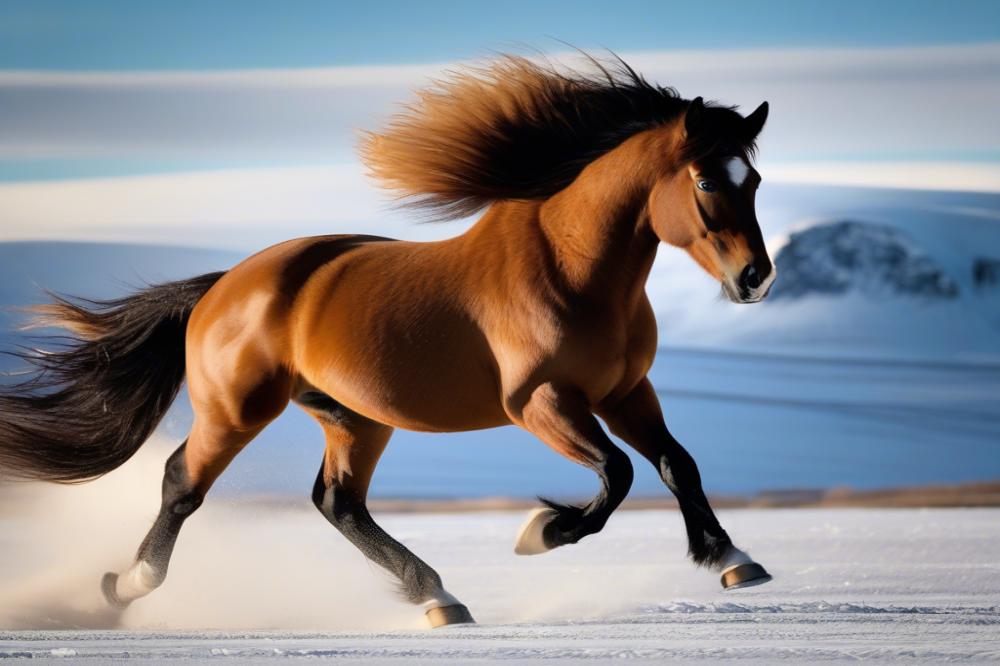Overview of Icelandic Horse Riding
Icelandic Horse Riding offers an immersive experience that transports riders to a world of beautiful landscapes and rich traditions. These horses are small but sturdy, known for their smooth gaits and unique abilities. Riders enjoy five distinct gaits, one of which is the incredibly exhilarating tölt. This gait allows for a comfortable ride over long distances. Understanding how to ride effectively involves more than just handling the reins. Elements like posture, seat, and balance play crucial roles in achieving harmony with the horse.
Importance of Balance in Riding

Finding balance is essential for any rider. It affects control, posture, and the ability to communicate with the horse. When you maintain proper alignment, movements become more fluid and natural. Without balance, a rider can easily disrupt the horse’s rhythm or create discomfort. This stability allows for a better connection between horse and rider. Ultimately, achieving balance contributes greatly to the overall riding experience, making it more enjoyable and safe.
Significance of Pace in Icelandic horses

Pace refers to a specific gait that is unique to Icelandic horses. This smooth and rapid movement requires keen timing and coordination from the rider. Mastering pace can elevate the riding experience, but it demands a heightened sense of balance. Riders must learn to adjust their posture and weight distribution to accommodate this unique gait. Success in riding pace lies in practice and understanding its nuances. With each stride, a rider develops a deeper relationship with the horse, enhancing both confidence and skill on the journey.
Understanding the Icelandic Horse

Unique Features of the Icelandic Horse
The Icelandic horse is unlike any other breed. Its small stature does not limit its strength or endurance. These horses are known for their thick manes and unique, double coats that keep them warm in harsh climates. Icelandics are also famous for their calm temperament. They are incredibly versatile, excelling in various disciplines. Riders often enjoy their friendly and curious nature. This breed is distinct for its incredible gaits, including the tölt and the pace.
The Importance of Gait Analysis
Analyzing a horse’s gait is vital for any rider. Understanding the movement can help in improving balance and overall performance. Observations allow for better communication with the horse. A rider can learn how to synchronize their movements with the horse’s rhythm. Each gait presents unique challenges that require specific techniques. Recognizing these differences aids in adapting your riding style. A well-performed gait can enhance both safety and enjoyment.
Understanding the Pace and Its Effect on Balance
Pace is one of the four main gaits of the Icelandic horse. This lateral movement can feel exhilarating but may also disrupt a rider’s stability. Riders often sway side to side, challenging their center of gravity. Striking the right pose on the saddle is essential for maintaining equilibrium. Engaging the core while riding at pace can provide additional support. Focus on adopting a centered position and allowing the horse’s movement to flow through the body. The balance improves as you become more accustomed to the motion. With practice, this gait can become a powerful tool for developing confidence while riding.
Fundamentals of Rider Stability
Role of Riding Posture in Maintaining Balance
Good riding posture plays a crucial role in staying balanced. The rider’s body should be aligned vertically. Keep your head up and shoulders back. This alignment helps in distributing weight evenly across the horse. Your legs should hang down naturally, maintaining a relaxed grip on the saddle. Sit deep in the saddle rather than perching on top. Bending your knees slightly can absorb the horse’s movements better. Engaging your core muscles also contributes to overall stability. Proper posture reduces strain and allows for smoother communication with your horse.
Essential Equestrian Skills for Stability
Several skills help in maintaining stability while riding. First, developing an effective seat is essential. A strong seat allows the rider to stay centered. Practicing transitions between gaits can improve balance too. Focus on maintaining a consistent rhythm during these transitions. Learning to use your reins properly is also important. They should assist rather than pull. When you feel secure in the saddle, you can focus on the horse’s movements. Lastly, practicing your turns will enhance your overall control while riding.
Saddle Fit Considerations and Its Impact on Balance
Choosing the right saddle is vital for balance. An ill-fitting saddle can throw off your center of gravity. It’s important to check that the saddle fits both the horse and the rider well. A properly fitted saddle provides stability and comfort. Think about how the saddle places your body. If the saddle is too wide or narrow, adjustments may be needed. Pay attention to how it feels while riding; you should feel secure. Testing different saddles can help find the one that feels just right. The aim is to create a harmonious connection between horse and rider.
Developing Balance Exercises
Specific exercises for improving balance on horseback
Riding an Icelandic horse can be thrilling, but balance is vital. One exercise you can try is the “one-leg balance.” While sitting in the saddle, lift one leg, keeping the other grounded. This simple action challenges your core and helps stabilize your body. Switching legs builds strength in both sides and enhances coordination.
Another effective way to work on balance is the “side-to-side sway.” Sit up tall and gently rock your body from one side to the other. This will engage your abdominal muscles, teaching your body to move with the horse. Engaging with the horse’s rhythm while swaying can make this exercise enjoyable.
Finally, practice “slow turns” in the saddle. Turn your upper body to face your horse’s shoulder while keeping your legs in place. This movement will promote better control and balance.
Groundwork and its contribution to balance
Groundwork plays an essential role in building balance. Leading a horse on the ground can teach you how to communicate effectively. As you move around your horse, stay mindful of your own body positioning. Good posture helps you understand where your center of gravity lies.
Engaging in groundwork exercises, like lunging your horse, also assists in improving your own balance. While monitoring your horse’s movements, you’ll naturally learn to adapt. Keeping a steady stance as you walk alongside your horse reinforces core stability.
Moreover, practicing mounting and dismounting can further enhance your skills. Do this slowly at first, focusing on smooth transitions. Each time you mount, take note of how you balance yourself.
Incorporating strength and flexibility training
Strength training is pivotal for better balance. Exercises such as squats and lunges target the leg muscles vital for riding. Strong legs offer more control when moving with the horse.
Flexibility is equally important. Stretching exercises, like toe touches and hamstring stretches, promote better movement. Increased flexibility can help you maintain your position during lessons.
Yoga is another fantastic option. Poses like “warrior” and “tree” build strength while encouraging balance. Each session helps you connect breath with movement, creating harmony in your riding.
By combining these methods, you will notice improvements in your overall stability. Practicing regularly and consistently can lead to great progress over time. You may find yourself more confident and balanced during your rides.
Techniques for Riding in Pace
Adjusting riding techniques for Pace
Riding an Icelandic horse in pace requires specific adjustments to your techniques. First, keep your body relaxed but alert. Tension can disrupt balance. Look forward, not down. This helps maintain proper posture throughout the ride. Position your legs securely against the horse’s sides. A solid leg grip provides stability. Use a soft contact with the reins to avoid pulling. This encourages your horse to move fluidly. Focus on rhythm; your motions should match the horse’s. Lean slightly back during movements to keep your weight centered.
Using Core Engagement for Better Balance
Core muscles play a crucial role while riding. Engaging them gives necessary support to your torso. Start by tightening your abdominal muscles. This simple action helps stabilize your upper body. Breathe deeply and maintain this engagement as you ride. This will improve your balance significantly. Keep your shoulders relaxed and aligned over your hips. A strong core works with your legs, enhancing overall stability. Shift your weight gently with the horse’s movements. Fluidity in your posture allows for better control and security.
Strategies to Enhance Coordination with Horse Movement
Developing coordination with your horse is essential for a smooth ride. One strategy is to practice slow movements before going into pace. This builds awareness of how your body interacts with the horse. Pay attention to the rhythm beneath you. Feel the horse’s gait and match your movements accordingly. Another effective technique involves visualizing the horse’s motion. Imagine how it glides through the pace. This mental preparation can enhance your body’s response. Communicate with your horse using gentle signals. Soft leg pressure can guide the horse subtly, aligning your movements. Lastly, practice riding in groups. Observing others can offer insights into maintaining balance and timing in pace.
Practical Application of horsemanship
Building a connection with the Icelandic horse
Establishing a bond with your horse is vital. Start by spending time with it on the ground. Grooming creates trust and comfort. Talk to the horse as you brush its coat. Soft words can help it relax. Slowly introduce yourself through gentle touch. This connection lays a foundation for trust when riding.
Pay attention to your horse’s reactions. It may shift its weight or breathe differently. These subtle signs indicate how it feels. Always approach your horse calmly. Horses can sense anxiety, which may disrupt your bond. A relaxed rider helps the horse feel secure. Over time, you will understand each other better.
Recognizing the horse’s cues for better balance
Horses communicate through body language. Learning to read these signals is essential for riders. When an Icelandic horse shifts its head, it may be preparing for movement. Awareness of its posture helps you adapt. This knowledge allows you to maintain better balance.
Feel the rhythm of the horse’s gait. A change in speed or tempo needs your attention. It is important to brace yourself and adjust your position correctly. Leaning too far back or forward can disrupt your balance. Keep your core engaged to stay centered in the saddle. This practice makes every ride smoother.
Practicing mindfulness while riding
Being present is crucial when riding. Focus your thoughts on the experience and the bond you are creating. Take deep breaths to calm your mind. A clear head contributes to better balance. Notice every movement, every sound around you. This awareness fosters a deeper connection to the ride.
Avoid distractions, whether from your surroundings or your thoughts. Focusing on the horse helps in fostering peace. Listen to its breathing and movements. Tune into these rhythms as the ride progresses. Mindfulness helps you respond to the horse more effectively. It might seem simple, but staying attentive can greatly enhance your stability.
Wrapping Up Your Journey to Balance in Riding
Developing balance while riding an Icelandic horse in pace is essential for any rider. You must focus on posture, coordination, and connection with your horse. Understanding these aspects lays a foundation for improved riding skills. Remember, each ride provides a valuable opportunity for practice and growth.
Riders should continually practice techniques that enhance their balance. Engage your core muscles and maintain soft knees to help absorb movements. The bond formed with your horse will greatly influence your ability to ride effectively. Patience and persistence are key when working on maintaining stability. Embrace every moment in the saddle as a chance to improve.
Improving horsemanship takes time and dedication. Assess your progress regularly and seek feedback from experienced riders or instructors. The journey to achieving balance is as important as the destination. It fosters a deeper understanding of your horse and promotes trust between you and your Icelandic horse.
In summary, mastering balance greatly enhances your riding experience. Approach each session with a determination to grow and learn. With practice, you will find your rhythm and confidence, leading to more enjoyable rides. Keep striving for improvement, and embrace the adventure of horsemanship in every stride.



